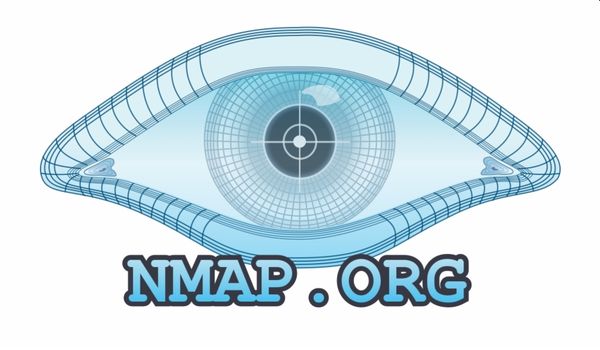
Penetration testing software plays a pivotal role in detecting, diagnosing, and correcting weaknesses in an institution’s computing system and applications before a cyber hacker discovers and exploits the flaw. It is the technique of exposing security flaws in computer applications and measuring the likelihood of a system being hacked by evaluating the system or network using a range of hostile methodologies. When several users are provided access to a system with fewer security safeguards, the system’s condition can be exploited.
The goal of this test is to protect sensitive data from outsiders who are constantly attempting to obtain unauthorized access to the system and to identify flaws that are difficult to detect during manual system analysis. A web application firewall (WAF) is frequently supplemented by penetration testing.
Pen testing includes attempting to break into a variety of application systems (e.g., APIs, frontend/backend servers) in order to find weaknesses, such as un-sanitized HTML inputs that are vulnerable to code injection attacks. Once a weakness in the system has been discovered, it is exploited in order to obtain access to the targeted data.
Web application penetration testing is classified as ethical hacking, and the individual who performs it is known as an ethical hacker.
Read also: What are the top main DevOps best practices?
What Are The Top Types of Penetration Testing?
Penetration testing, also known as ethical hacking, is a method of assessing the security of computer systems, networks, or applications by simulating real-world attacks. There are various types of penetration testing, each focusing on different aspects of security. Here are five common types:
Network Penetration Testing: This type of testing aims to identify vulnerabilities in network infrastructure, such as firewalls, routers, switches, and other network devices. It involves analyzing network configurations, examining the effectiveness of security controls, and attempting to exploit weaknesses to gain unauthorized access.
Web Application Penetration Testing: Web applications are a common target for attackers, so testing their security is crucial. Web application penetration testing involves assessing the security of web applications, including websites, web services, and APIs. Testers analyze the application’s code, inputs, outputs, and server configurations to identify vulnerabilities like SQL injection, cross-site scripting (XSS), and insecure session management.
Wireless Network Penetration Testing: Wireless networks, including Wi-Fi, can be vulnerable to attacks. Wireless network penetration testing focuses on identifying weaknesses in wireless network infrastructure and configurations. It includes analyzing encryption protocols, access controls, and wireless network management systems to uncover security flaws and potential unauthorized access points.
Social Engineering: Social engineering tests the human element of security. It involves manipulating people through psychological tactics to gain unauthorized access to systems or sensitive information. This can include phishing emails, phone calls, impersonation, or physical interactions to exploit human trust and weaknesses.
Physical Penetration Testing: Physical penetration testing assesses the physical security of an organization’s premises. Testers attempt to bypass physical security controls, such as access control systems, locks, alarms, and surveillance systems, to gain unauthorized access to restricted areas or assets. This type of testing can involve covert entry techniques, social engineering, or physical hardware manipulation.
What Tools Are Used for Penetration Testing?
We have listed some of the best Penetration Testing Tools below.
1. NMap–

The Network Mapper (Nmap) is a program that allows you to investigate a cloud server. Nmap comes with a wealth of developed knowledge in the form of a wide range of scan kinds. These various sorts of scans are intended to circumvent defenses or detect distinctive characteristics that can be used to identify specific operating systems or apps. More than a penetration testing tool, Nmap is a port scanner. However, it assists pen testing by highlighting the ideal spots to attack which aids ethical hackers in identifying network flaws. It’s also free as it’s open source and makes it extremely useful for those who are experienced with open source software, but it may be difficult for those who are unfamiliar with such programs. It runs on all major operating systems, but Linux users will find it more accessible.
Available on: – click here
2. Nessus-

Because of its large collection of vulnerability signatures, Nessus is the most common vulnerability scanner. A Nessus scan will look over the targeted system and offer a list of security flaws, along with other information for exploitation and mitigation. These scans provide a list of possible pathways of attack routes for getting access to a target network system to a penetration tester. With two million downloads globally, Nessus by Tenable performs vulnerability assessments for over 27,000+ companies. To deal with duties like configuration audits and patch management, 450 compliance and configuration templates are given. This enables IT to identify risks, vulnerabilities, and patches that are outdated.
Available on: – click here
3. Burp Suite-

Although many protection testing specialists claim that pen-testing without this tool is impossible as this is one of the key scanners with a restricted “intruder” tool for attacks.
As a result, while this technology isn’t free, it is extremely efficient. Fundamentally this program does a variety of activities, including transparent proxy, dragging features and functionality, web vulnerable scanning, etc. Furthermore, you may use this tool to do these activities on all main platforms, including Windows, Apple Mac OS X, and Linux ecosystems.
A pen tester can use Burp Proxy to carry out a man-in-the-middle (MitM) attack by intervening between a web server and a browser. This allows them to inspect and change network traffic in real-time, allowing them to find and exploit web application flaws or data outages.
Portswigger’s Burp Suite is a set of software security testing tools. Burp Proxy, their web proxy, is probably the most well-known of these technologies.
Available on: – click here
4. Wireshark–

Then there’s Wireshark, which is a versatile tool for seeing what’s going on in your network. As a result, it’s commonly used to delve into common TCP/IP connection issues. This program allows for the examination of a large number of protocols, as well as authentic investigation and decryption support for many of them. Furthermore, if you wish to record data packets, it will allow you to study the many characteristics of particular packages, including their origin, objective, and methodology they used. If you are new to pen testing, Wireshark should be your go-to tool!
Available on: – click here
5. SQL Map-

SQLMap is an open-sourced penetration testing application that streamlines and automates the process of finding and mitigating SQL injection flaws, as well as gaining control of a server’s information. As a result, sqlmap is a tool that can discover and exploit SQL injection problems efficiently as well as instantaneously Furthermore, it comes with a command-line input and is free to use on a variety of systems including Linux, Apple Mac OS X, and Microsoft, Windows.
Available on: – click here
Conclusion-
This article provides an overview of some of the most frequent and top penetration testing tools used by top penetration testing companies; however, it is not an extensive list. With the exception of Nessus, most of the penetration testing tools listed above are free, making them simple to incorporate into a penetration tester’s toolkit.
Furthermore, the majority of these most of security testing tools are pre-installed in Kali Linux making them simple to set up and test. The use of open source Penetration Testing Tools has a number of advantages, including the fact that they are always being improved by subscribers and other types of cybersecurity specialists to ensure that they keep ahead of the threshold threat landscape.